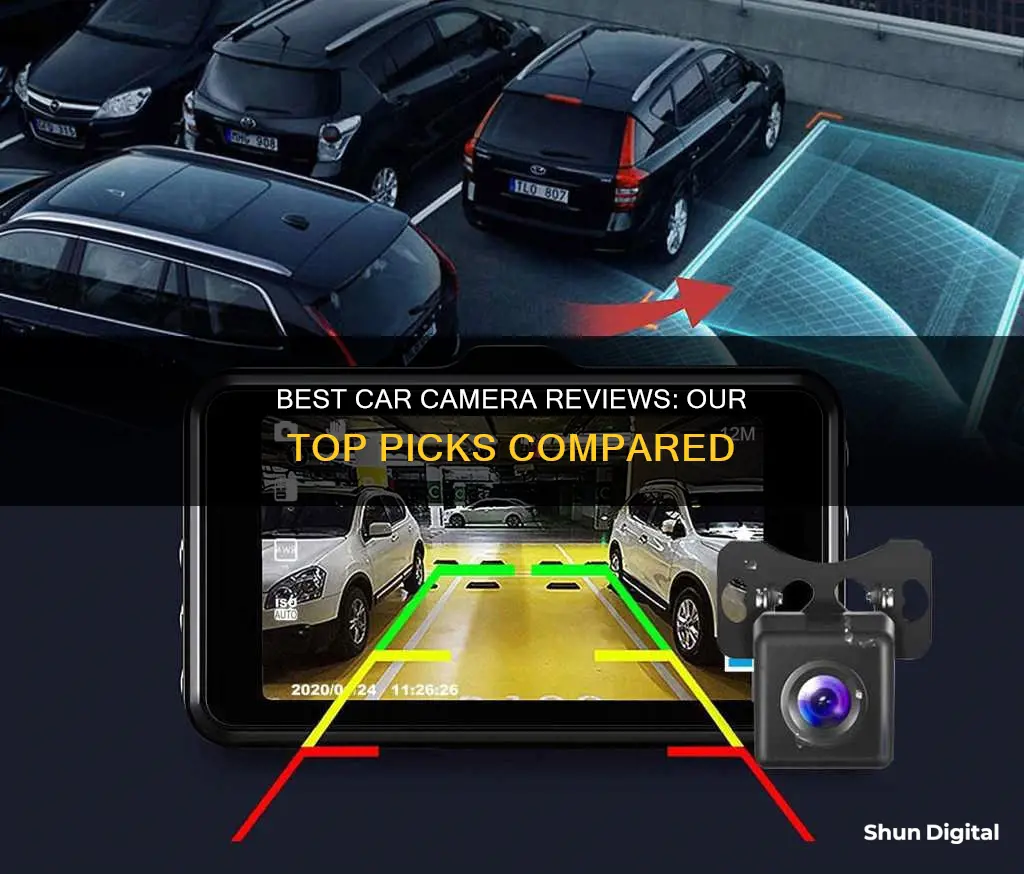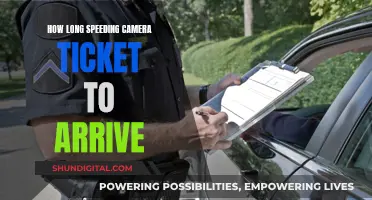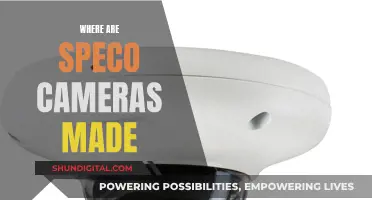
There are many car camera options available on the market, and it can be challenging to decide which one is the best fit for your needs. When choosing a car camera, it is essential to consider your budget, desired features, and specific requirements. Here are some factors to keep in mind when selecting a car camera:
- Video Quality: Look for cameras that offer high-resolution recording, such as 4K or 1440p, to ensure clear and detailed footage.
- Field of View: A wider field of view allows you to capture more of your surroundings, but it may also introduce distortion. Consider a field of view between 120 and 140 degrees for a balance between coverage and minimal distortion.
- Night Vision: If you frequently drive at night or in low-light conditions, look for cameras with infrared lighting or night vision mode to enhance visibility and capture crucial details.
- Storage: Consider the storage options available, such as microSD cards or internal storage. Ensure that the storage capacity is sufficient for your needs, especially if you plan to record in 4K resolution.
- Power Source: Decide how you want to power your car camera. Options include auxiliary 12-volt power, hard-wired 12-volt power, OBD-II 12-volt power, or battery/super-capacitor power. Each option has its advantages and considerations, so choose the one that best suits your needs and vehicle setup.
- Additional Features: Some car cameras offer extra features such as voice control, GPS, parking monitoring, lane departure warnings, and forward-collision warnings. Decide which features are most important to you and look for cameras that offer those specific functionalities.
| Characteristics | Values |
|---|---|
| Resolution | 1080p, 1440p, 2K, 4K |
| Viewing Angle | 135, 140, 144, 156, 160, 165, 170, 180 degrees |
| Memory | microSD, Cloud, Internal Storage |
| Parking Mode | Yes, No |
| GPS | Yes, No |
| Voice Control | Yes, No |
| Alexa Support | Yes, No |
| Subscription | Yes, No |
| Size | Compact, Large, Very Small |
| Display | Yes, No |
| Mount | Suction Cup, Adhesive Pad, Magnetic |
| Power Supply | 12V, Hardwired, OBD-II, Battery |

Front-facing cameras
Resolution
The resolution of a front-facing camera determines the clarity and detail of the recorded footage. While 1080p Full HD resolution is generally sufficient for capturing license plates and other important details, 4K resolution offers sharper and more detailed footage. Some cameras, like the Viofo A229 Pro, offer 4K Ultra HD resolution, providing exceptionally clear and detailed footage.
Field of View
The field of view of a front-facing camera refers to the width of the area captured in the footage. A wider field of view allows for a larger portion of the road and surroundings to be recorded, which can be beneficial for capturing multiple lanes or a large intersection. Cameras with a narrower field of view may require more precise positioning to ensure that all relevant details are captured.
Additional Features
When selecting a front-facing camera, it is worth considering additional features that can enhance its functionality and convenience. Some cameras offer parking mode, which allows the camera to monitor the vehicle even when it is parked and the engine is off. This can be useful for detecting and recording any impacts or movements around the car. Built-in GPS is another valuable feature, as it enables the camera to record the vehicle's location, speed, and direction of travel, providing valuable information in the event of an incident.
Additionally, some front-facing cameras offer Wi-Fi and smartphone app connectivity, allowing for easy access to footage and adjustments to camera settings. Voice control and emergency alerts are also available on select models, providing added convenience and peace of mind.
When choosing a front-facing camera for your dash cam system, it is important to consider your specific needs and budget. Higher-end models may offer advanced features and improved video quality, while more affordable options can still provide essential functionality and clear footage.
Streaming Surveillance Footage to a Projector: A Step-by-Step Guide
You may want to see also

Rear-facing cameras
Two-channel dash cams often require professional installation, as they need their long cable tucked into the gaps between and behind the interior panels and roof lining of your car. They are then powered either by a single cable attached to the front camera and your car’s 12v lighter socket, or by a hardwiring kit that draws power from the vehicle’s fuse box.
The rear cameras usually stick to the rear screen with an adhesive pad. Some models offer a lot of adjustability, while others need to be positioned carefully to get a perfect view.
Although rare, some rear cameras are weather-resistant and designed to attach to the rear of the car, close to the license plate.
Although inherently more expensive than an equivalent one-channel dash cam, front-and-rear systems are available at many price points, from under $100 to over $500. It’s also possible to buy a front-facing dash cam, and then expand the system with a compatible rear camera at a later date.
The Magic of Pinhole Camera Focus: How Does It Work?
You may want to see also

4K resolution
The higher resolution of 4K car cameras also means that footage can be zoomed in on without a significant loss in quality, which could be useful for gathering evidence. Additionally, the improved image quality of 4K footage means it may be sold for a higher price to news stations or online.
There are several 4K car cameras on the market, with some of the most popular models including:
- Miofive S1 Ultra: This camera offers 4K resolution at the front and 1080p at the rear, with a 128GB internal storage capacity. It also features a GPS function and a G-sensor.
- Garmin Dash Cam Mini 2: This compact camera records in Full HD with HDR, producing sharp and detailed footage. It has a simple setup and an intuitive interface, although it lacks GPS functionality.
- Cobra SC 400D: The Cobra SC 400D offers 4K resolution and a responsive touchscreen. It also features a strong magnetic mount and a proprietary DriveSmarter app that provides police alerts and other driver reports.
- Rexing V1P Plus: This camera offers 4K UHD front recording and Full HD 1080p in the rear. It includes useful features such as a built-in microphone, speaker, optional GPS, enhanced night vision, WiFi, and a mobile app.
- Thinkware U3000: This camera captures stunning daytime and nighttime footage in 4K UHD with the help of Sony's next-generation STARVIS 2 sensor. It also includes a built-in radar for monitoring motion and impact while in parking mode.
- Viofo A229 Pro: This camera delivers clear and sharp 4K video and has useful features such as GPS and 24-hour parking monitoring. It comes in 1-, 2-, and 3-channel versions, offering flexibility to suit your specific needs.
The Evolution of Colored Cameras: A Historical Perspective
You may want to see also

Night vision
Passive night vision systems in cars use thermal imaging technology to light up nearby objects, animals, and people. This distinguishes warm objects from the road, which maintains a lower temperature. Passive systems are found in BMW, Cadillac, Volkswagen, and Audi vehicles.
Active night vision systems, on the other hand, use image enhancement technology to project a brighter, well-lit scene. These systems rely on infrared lights in the vehicle's body to highlight the path ahead. They offer a higher-quality image than passive systems and can brighten objects at a greater distance. Active systems are used by Toyota, Lexus, and Mercedes-Benz.
One example of an active system is the Night View Assist Plus with Spotlight Function by Mercedes-Benz. This system not only provides a clear image of the road ahead but also includes a pedestrian detection function. When a pedestrian is detected, the system flashes a warning at them and the driver, without dazzling other vehicles.
BMW's Night Vision system, introduced in 2005, uses far-infrared radiation to minimize non-essential information and place a greater emphasis on pedestrians and animals. The system has a range of up to 300 meters and avoids glare from headlights and road lights.
Aftermarket night vision kits are also available, with prices ranging from $100 to over $1,000. One such option is the Lanmodo Night Vision camera, which can be mounted on the dash or windshield and plugged into the cigarette lighter. The Lanmodo system, however, does not include pedestrian detection software.
Camera Tickets: Admissible Court Evidence?
You may want to see also

Loop recording
Dash cameras use memory cards to store the video footage they capture. These cards vary in size, which means there is a limit on how much video can be stored on them at any given time. The demands of the car camera owner often dictate that the camera is left recording for journeys that last longer than the number of minutes of video that can be stored on the card. For example, if the memory card can hold up to 4 hours of video, but the car journey is 5 hours long, then there is a 1-hour deficiency in memory for that particular journey.
For the vast majority of car camera users, the only part of a journey they are interested in is the part where an incident occurs, and typically, an incident or accident only takes seconds of video rather than hours. With this in mind, the makers of car cameras have implemented "Loop Recording", which allows the owner of the vehicle who is not concerned with storing hours of footage simultaneously to use a memory card with a relatively small capacity, safe in the knowledge that at the expense of uneventful footage, the footage that contains an accident or incident will be safely stored even if the memory card becomes full.
The basic process assumes that the "oldest video footage" present on a memory card is of no use and can, therefore, be deleted if the memory card becomes full. There are normally various loop recording options present on the camera's settings menu, which define exactly how much of the total video can be deleted when more space is required as a journey continues.
Deleting a portion of a single video file is extremely processing-intensive and could not be realistically performed while the camera carries on recording, so the camera will create small video files of a length that is determined by the settings. For example, if the setting for loop recording is "1 Minute", then the camera will create video clips of 1-minute in length, and a 1-minute clip will be deleted when more memory is needed. If the setting is "5 Minutes", the camera will create video clips of 5 minutes in length, and a 5-minute clip will be deleted when the camera needs more memory.
To stop important clips from being overwritten, many of the best dash cams can automatically detect potential incidents and flag the relevant footage to protect it from deletion. Most models with loop recording also allow you to manually tag clips with the same effect, generally by way of a shortcut button on the body of the dash cam.
Car Cameras in Kansas: Are They Legal?
You may want to see also
Frequently asked questions
The best dash cams for older cars without an infotainment system are the Garmin DriveCam 76 and the Thinkware U1000. The Garmin DriveCam 76 is a feature-packed tool that combines a dash cam and a sat nav system, while the Thinkware U1000 is a hard-wired dash cam that looks like it came with the vehicle.
The best budget dash cams are the Thinkware F70 Pro, the Miofive 4K Dash Cam, and the Garmin Dash Cam Mini 2. The Thinkware F70 Pro is a compact and simple dash cam with Full HD video capture, while the Miofive 4K Dash Cam offers integrated storage, excellent 4K video, and a compact design. The Garmin Dash Cam Mini 2 is the smallest dash cam on the market and records in Full HD with HDR.
The best premium dash cams are the Nextbase 622GW, the Cobra SC 400D, and the Nextbase iQ. The Nextbase 622GW offers Alexa voice control, automatic emergency notifications, and modular add-on cameras, while the Cobra SC 400D delivers stunning images with a sturdy magnetic mount and a crisp 3-inch touchscreen display. The Nextbase iQ is a 4G-connected dash cam that doubles as a security camera for your car.
The best 3-channel dash cam is the Viofo A229 Plus, which offers front, interior, and rear cameras, as well as a discrete interior camera and colorful, detailed captures.
The best 4-channel dash cam is the Vantrue N5, which offers a front, rear, and dual cabin camera setup, embedded and watermarked GPS, voice control, and phone connectivity.







